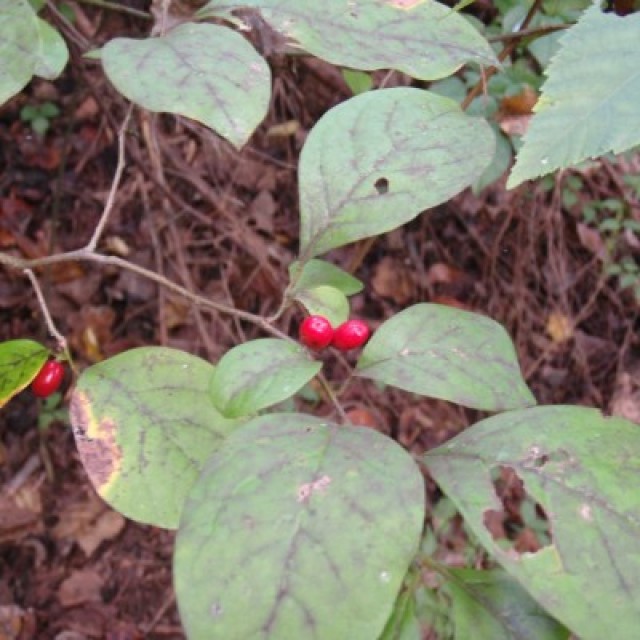COMMON NAME
Spicebush
SCIENTIFIC NAME
Lindera benzoin
ALSO KNOWN AS
Benjamin bush, Wild allspice
Plant family
Laurel (Lauraceae)
Plant group
Deciduous Trees and Shrubs
Spicebush is a native shrub in the eastern U.S. It grows in moist woodlands and has both male and female plants. Spicebush blooms in the early spring and has small, yellow flowers. In the fall, the female trees have bright red berries that provide valuable food for wildlife.
390 reports
108+
OBSERVERS
390+
OBSERVATIONS
Identification hints
Spicebush is a native shrub in the eastern U.S that commonly grows in moist woodlands. Each shrub will have either male or female flowers, but not both on the same shrub. Male and female shrubs must be in the same area for fruiting to occur. The leaves are oval shaped, 6-15 cm long and are broadest above the middle of the leaf. The leaves alternate along the twig. Spicebush blooms in the early spring and has small, yellow flowers that appear before the leaves. In the fall, the female trees have bright red berries and the leaves turn a pretty yellow color.
Did you know?
Spicebushes are great for a variety of wildlife. Butterflies, such as the Spicebush swallowtail and the Promethea silkmoth caterpillars eat the leaves and often use them to build their cocoons. Birds eat the berries in the fall. This shrub is also deer tolerant. The leaves and berries are very aromatic, with a turpentine-like or spicy smell to them when crushed or rubbed. It is important to note that another plant, Calycanthus, also has the common name Spicebush. This is not the same plant.
DISTRIBUTION IN TH U.S.
Alabama
,
Arkansas
,
Connecticut
,
Delaware
,
Florida
,
Georgia
,
Iowa
,
Illinois
,
Indiana
,
Kansas
,
Kentucky
,
Louisiana
,
Massachusetts
,
Maryland
,
Maine
,
Michigan
,
Missouri
,
Mississippi
,
North Carolina
,
New Hampshire
,
New Jersey
,
New York
,
Ohio
,
Oklahoma
,
Pennsylvania
,
Rhode Island
,
South Carolina
,
Tennessee
,
Texas
,
Virginia
,
Vermont
,
West Virginia
HABITAT
There is no information available about this species.
See Menu
- 2021 Chicago Botanic Garden. All Rights Reserved.
-
Creative Commons
BY-NC-SA 4.0 - Terms of Use
- Privacy Policy
- Data Sharing and Citation Policies
- 2021 Chicago Botanic Garden. All Rights Reserved.



